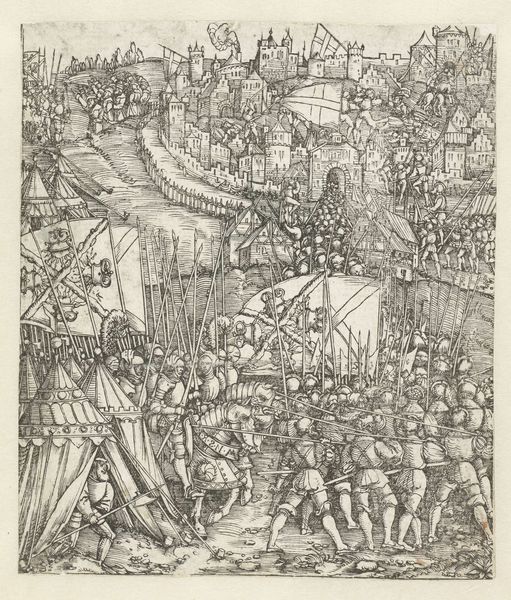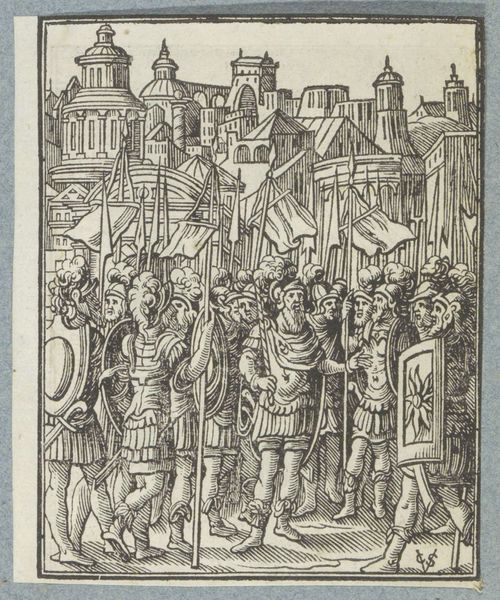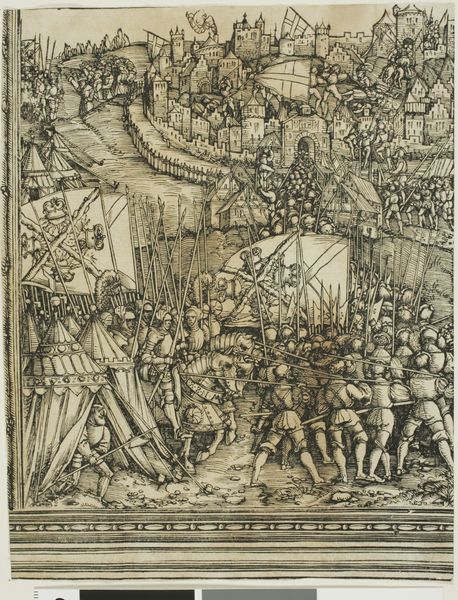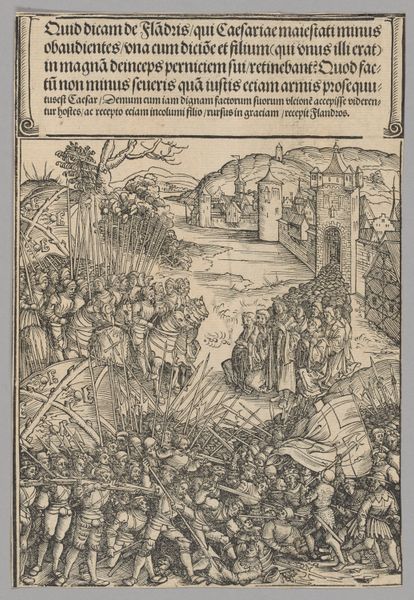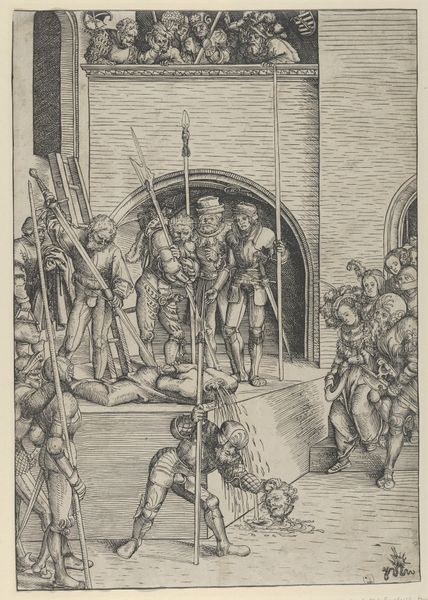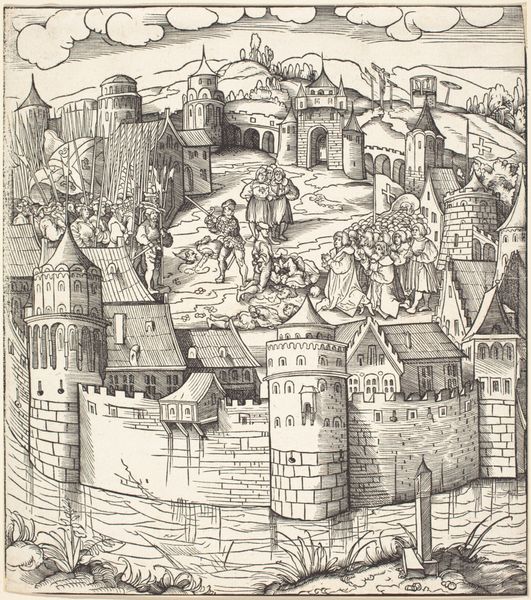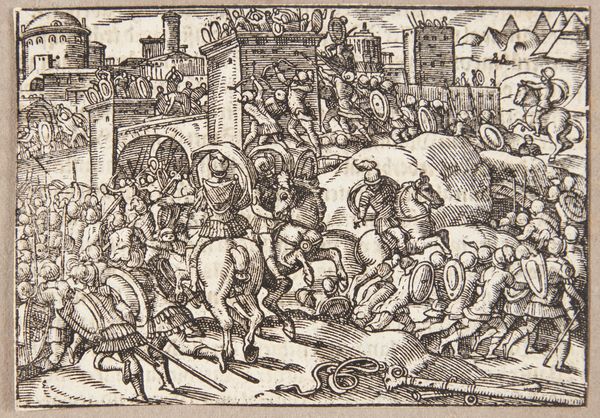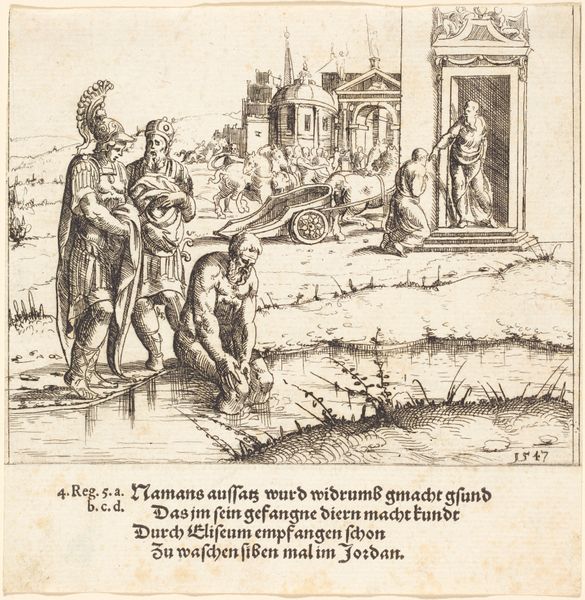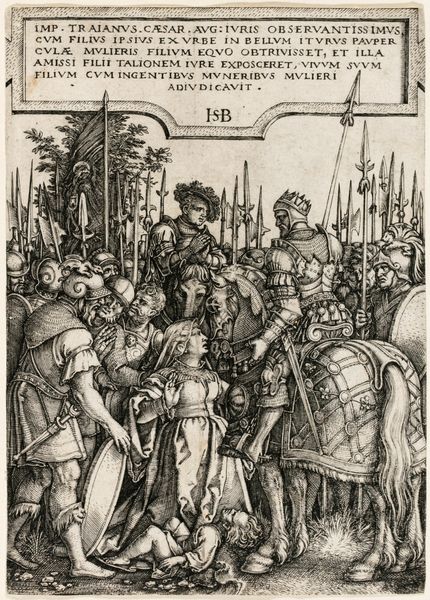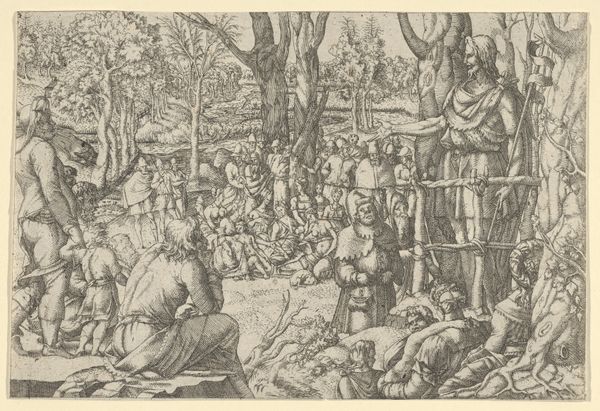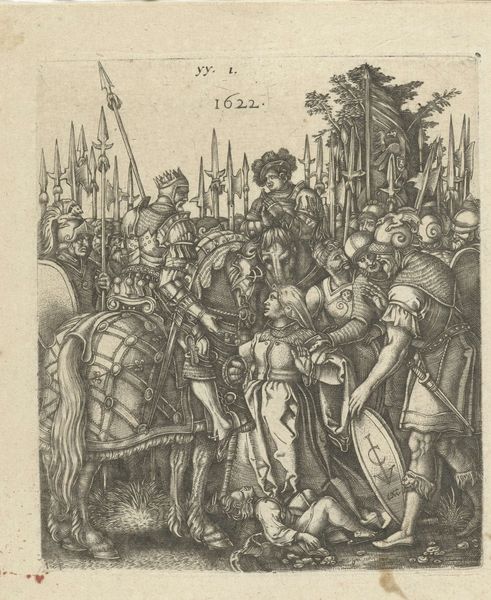
The Death of Bertrand du Geusclin (c.1320-80) at Chateauneuf-de-Randon 1460
0:00
0:00
jeanfouquet
Bibliothèque nationale de France (BnF), Paris, France
tempera, painting
#
portrait
#
medieval
#
narrative-art
#
tempera
#
painting
#
history-painting
#
international-gothic
Dimensions: 46 x 35 cm
Copyright: Public domain
Curator: We're looking at "The Death of Bertrand du Guesclin at Châteauneuf-de-Randon," a tempera painting created around 1460 by Jean Fouquet. It's currently held in the Bibliothèque nationale de France. Editor: It's remarkable how much detail is packed into this small panel. The scene is dominated by that blood-red tent, drawing our eye to the drama unfolding within, juxtaposed against the imposing castle on the hill. Curator: Absolutely. Consider the tempera medium Fouquet chose; the detailed, precise lines, and luminous colours reflect a dedication to the craft befitting such a powerful narrative. Tempera allowed for fine detail, crucial for depicting textures of the fabrics and armor. This reflects both the economic investment in materials, and the artisan’s investment of labour. Editor: It definitely captures a sense of drama, and yet it's also very controlled, very deliberate. Think about the historical context—Du Guesclin was a key figure in the French army during the Hundred Years’ War, and this painting commemorates his death during a siege. It's not just about mortality; it's about power, legacy, and national identity. Curator: Indeed. And think of the labour and socio-economic realities of the people creating pigments and preparing parchment at the time. This was very highly specialized skilled work which provided luxury goods for elite patrons, cementing their status. The choice of expensive materials underscores this class dynamic. Editor: Right. The work serves to uphold societal hierarchies. Look at those mourning figures surrounding the tent. The rigid posture of those figures almost suggests a stage play of grief—emphasizing performance of emotion over genuine affect, and serving as a kind of moral lesson of duty, fidelity, loyalty to one’s liege. Curator: It shows the artistry of both making and control. The application and refinement required a skill born of the guild systems. Even something as simple as the repeated use of certain colors, that blue for example, signifies a painter’s mastery, showing material mastery, Editor: I see that point; it highlights material control. Beyond this though, it emphasizes the way identity, particularly national identity, was being shaped through visual narratives. Consider the flags— symbols of French power, framing the scene and reminding the viewer of the larger stakes, national legacy, that extend even beyond this tent and the fallen hero inside it. Curator: A key example of craft’s integration within powerful commissions that define class dynamics and socio-political forces. The resources and labour shaped a national vision for generations. Editor: So, Fouquet's image speaks volumes about how we remember and how we're encouraged to mourn. And maybe how statehood arises through those things. Curator: Yes. When assessing the context of the painting alongside materials of its manufacture, we achieve a deeper insight into artistic expression during a moment of immense social, economic and political transition.
Comments
No comments
Be the first to comment and join the conversation on the ultimate creative platform.

